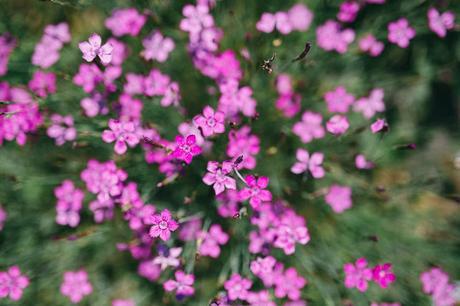
You could, by making a few small changes, turn your garden into a wildlife haven, bringing safety and security to the small animals and insects who make it their home, and hours of enjoyment to you and your family. Here are just eight ways you can encourage more birds, animals and insects to come to you.
Choose the right flowers
Flowers, as you know, offer pollen and nectar for bees, butterflies and other pollinating insects and we need these guys to maintain our food chain. Choose wildflowers rather than highly-developed varieties as these often have little or no pollen or nectar. Try crocuses, ivy and daisies for months of bee food.
Grow a good mix of shrubs and trees
Try a selection of trees throughout the garden, or a mixed hedge, in order to provide food and shelter for lots of different species. Different birds go for different fruits and seeds, for example, and some animals choose to winter in some trees and bushes. Berry trees are always popular, as well as crab apple and blossom trees.
Don’t forget the mature trees
If you already have some mature trees, then look after them. If not, think about planting some, with advice from The Tree Center before you take the plunge. Big trees are invaluable to many animals, as well as humans, in terms of shade, shelter and resources.
Add a water feature
This can be a shallow pond, or even an old butler sink or a little fountain. If you opt for a bigger pond, let water plants and animals colonize it naturally. Make sure one side slopes up so that the animals can climb out if necessary.
Have a deadwood pile somewhere shady
Dead and decaying wood provides a home to the many types of beetles and fungi that are becoming rarer, even in rural areas. A pile of undisturbed wood is also a good home for grubs and small mammals, especially over the winter months. Your compost heap is also a good source of food, shelter and warmth for lots of small animals.
Offer food and water all year round
Your garden birds are among the most visible visitors and usually the most welcome, so help them along in the winter with extra food – fat
balls, seeds and so on – as well as clean water to drink and bathe in during the summer (it can also be hard to find unfrozen water during harsh winters).
Don’t be over-tidy
The odd pile of leaves, logs or even stones will provide a habitat for many creatures. Try to include hollow stems in your piles so insects can hibernate in them. You can also allow one patch of grass to grow wild so mice and other small mammals have shelter and cover and butterflies and caterpillars have some food.
Use fewer synthetic pesticides and herbicides
These compounds don’t just affect their targets, they can affect anything that comes into contact with them. Try to avoid them whenever possible and use companion planting to deter pests and competitive plants – it can be done.
If you enjoy my blog, please consider following me on Bloglovin'
